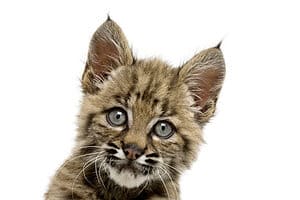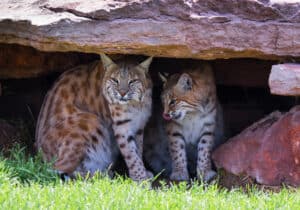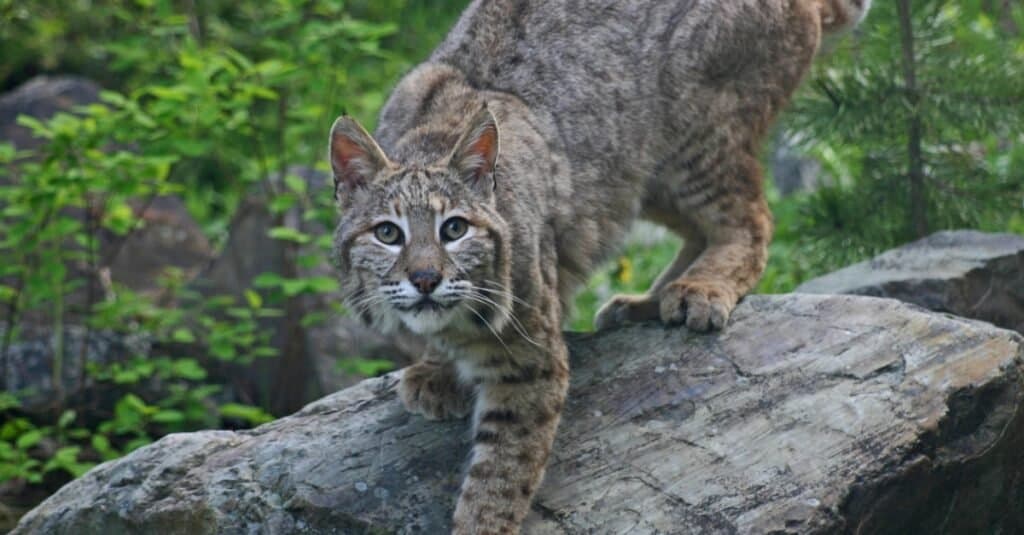
The bobcat is the smallest type of lynx cat breed.
©iStock.com/Anita Elder Design
The bobcat, also known as the red lynx, bay lynx, or wildcat, is a medium-sized bobtailed cat native to North America. Their habitat stretches from Southern Canada to Southern Mexico. The bobcat is a close relative of the slightly larger Canada lynx and is often confused for one. There are a lot of people who mistake bobcats for domestic cats or stray kittens because of their small size. So, are bobcats dangerous, or just as cuddly and adorable as domestic cats?
Are Bobcats Dangerous?

Bobcats are shy animals who avoid human interaction. They are extremely unlikely to attack.
©Rejean Bedard/Shutterstock.com
Bobcats are typically shy and lonely creatures by nature who rarely initiate contact with humans, therefore human attacks are unlikely. However, they are still dangerous if startled or placed in danger. Because they are not always immediately visible when they are present, accidental contact is conceivable.
How Big Is a Bobcat?

The largest bobcat recorded so far weighed in at 52 pounds.
©Fijetland, Conrad – Public Domain by US Fish & Wildlife Service, from Wikimedia Commons, the free media repository – License
These cats range in size from eight to 33 pounds and are about the size of a medium-sized dog. Male bobcats are larger than females, measuring 25 to 42 inches in length, not including the tail. Northern bobcats are larger than those found in southern regions. The largest bobcat recorded thus far weighed in at 52 pounds!
Are Bobcats Afraid of Humans?
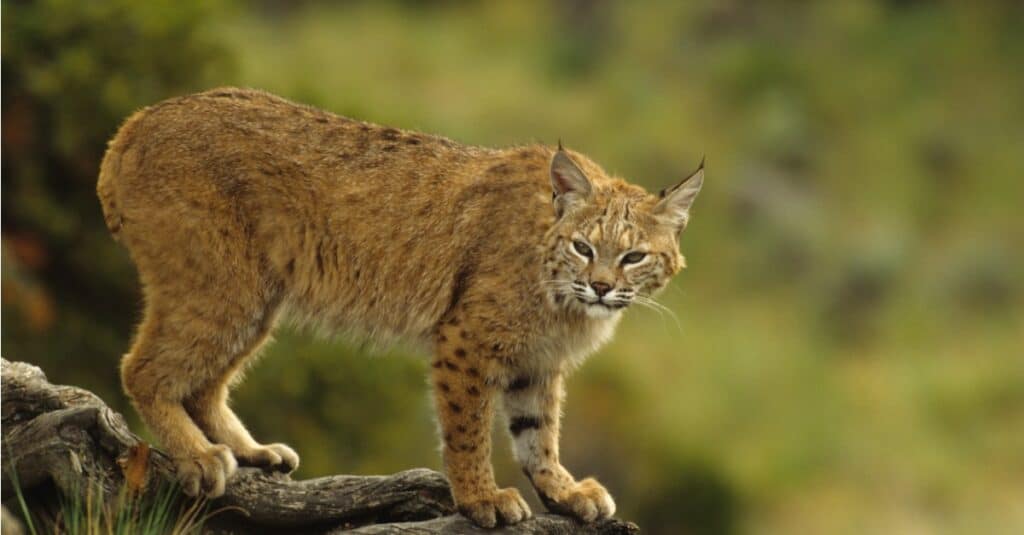
Bobcats are nocturnal, meaning they are most active from dusk to dawn.
©iStock.com/twildlife
Bobcats have an innate fear of humans and will not attack unless cornered, provoked, or habituated in some other way. Otherwise, they are shy creatures who avoid human interactions. A bobcat can become hostile on rare occasions, and rabies-infected bobcats can attack and infect humans.
Can A Bobcat Hurt a Human If It Did Attack?

Although bobcats are unlikely to attack a human, if an attack did occur, they could cause serious injury.
©Victor Arita/Shutterstock.com
If a bobcat attacks, you could be seriously injured. A fully developed bobcat has claws that are 1 inch long and teeth that are 1 inch long. It is unlikely to kill a human and will usually only attack an animal larger than itself out of self-defense. If you see a bobcat close by or approaching, make loud noises, wave your arms, and flee. In the wild, do not approach a bobcat.
What Do Bobcats Eat?
Mice, rats, squirrels, chickens, young fawns, wild birds, feral cats, and rabbits are among the animals eaten by bobcats. Free-roaming cats or small dogs left outside unsupervised are extremely unlikely to be taken, although it is possible.
Should You Be Afraid If Bobcats Live Around Your Home?

Bobcats are an important part of our ecosystem and maintain balance in rodent populations.
©Laurie E Wilson/Shutterstock.com
There is no reason to be alarmed or concerned if you spot a bobcat near your home. Bobcats, as well as coyotes, and foxes are beneficial to humans in managing rodent populations and are necessary to healthy ecosystems.
What Should You Do If Bobcats Live Near Your Home?
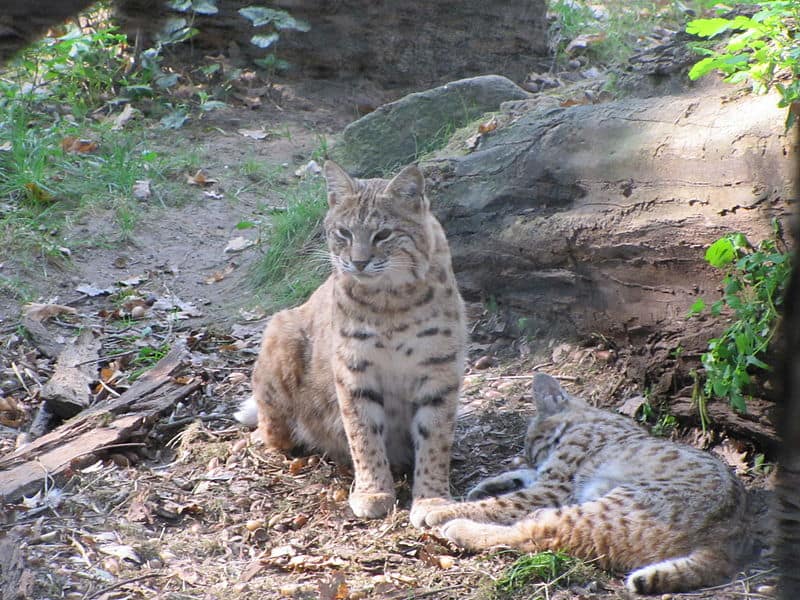
These two young bobcats lounge around in a zoo.
©Redrobsche, CC BY-SA 3.0, via Wikimedia Commons – License
Most people feel that removing the animal will solve the problem, but this is not the case. When wild animals are removed, it doesn’t take long for other animals from the wild to move in, and the problem may worsen. Removing the bobcat is rarely a good idea, and in most circumstances, other predators such as coyotes may move in.
In other words, bobcats do more good than bad and there could be more dangerous dwellings nearby to take over.
Are Bobcats Territorial?
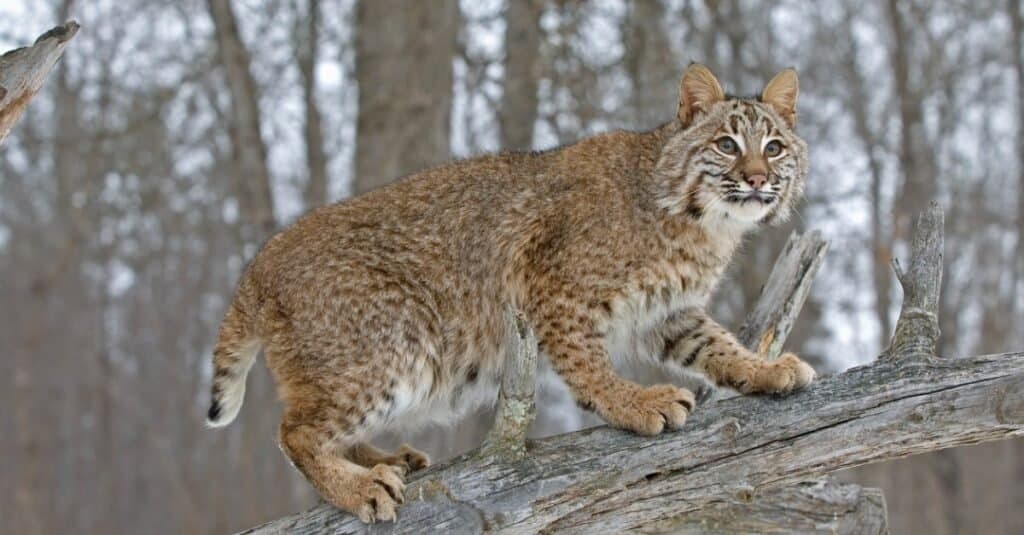
Bobcats are some of nature’s most fearless predators. They are bold enough to kill dangerous snakes.
©iStock.com/JohnPitcher
Bobcats are primarily solitary animals. Like most other cats, rarely share territory with other cats of the same gender. The territories of female bobcats are approximately five to even square miles in size. Male territories are often much larger than those of females, up to 25 square miles and they may overlap with several female bobcats’ home ranges. They mark their territories to keep other bobcats out.
Are Bobcats Fast?
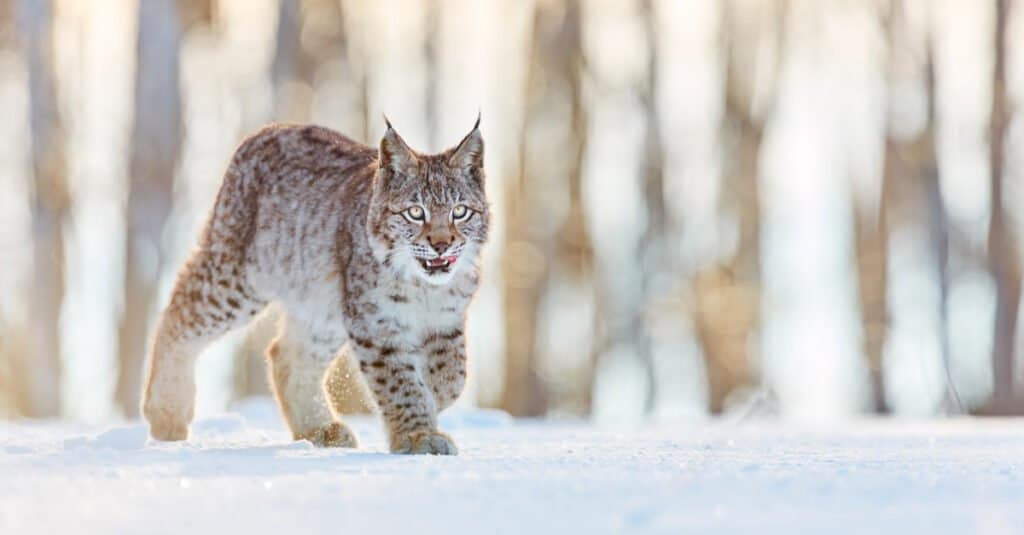
Bobcats can run up to 30 mph.
©Petr Salinger/Shutterstock.com
A full-grown bobcat can run up to 30 miles per hour. To compare, a cheetah can run up to 70 mph. The fastest human speed recorded was 23 mph (Usain Bolt). With the average human running at a much slower speed, no person should ever try to outrun a bobcat.
Is A Bobcat a Good Pet?

Bobcats are dangerous, yet domestic cats are more likely to attack you.
©Calibas assumed (based on copyright claims)., Public domain, via Wikimedia Commons – License
Bobcats can make for a good exotic pet, but only if their owners are willing to care for them as unique animals. Owners of exotic pets are not typical pet owners. Do not attempt to capture and keep a wild bobcat as a pet. Many bobcat pets are rescues or have been raised in captivity since they were cubs.
To summarize, bobcats are dangerous, yet domestic cats are more likely to attack you. Bobcats are nocturnal creatures who have a healthy respect for humans.
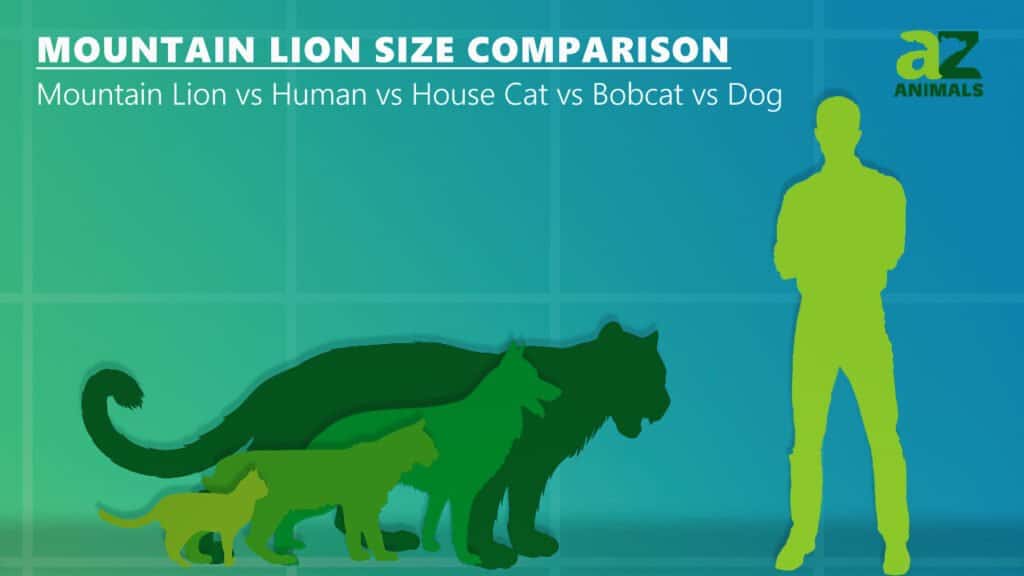
Bonus: Can Bobcats Breed with Domestic Cats?
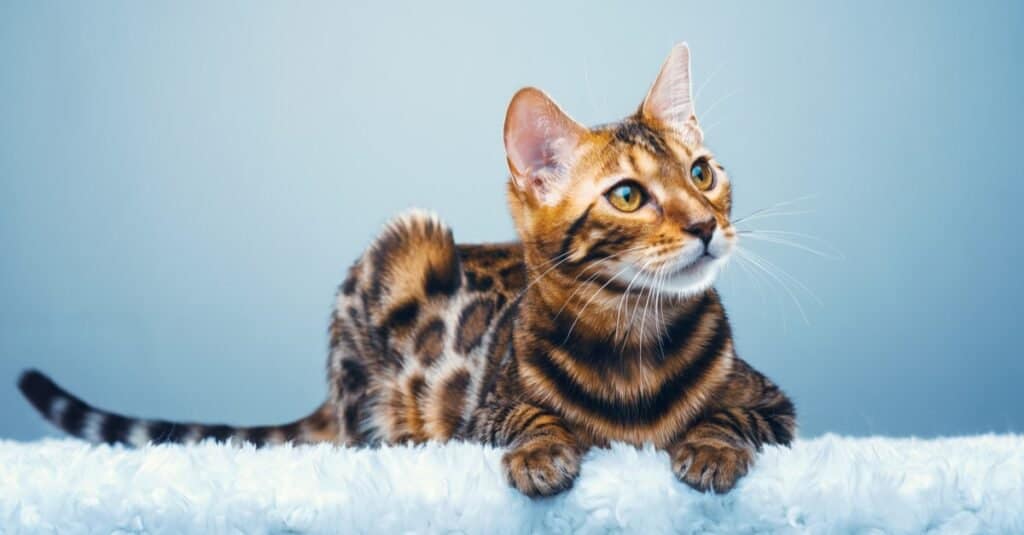
The Bengal cat is a cross of a domestic cat and an Asian
leopard
cat.
©Cressida studio/Shutterstock.com
You may be familiar with cat/wildcat hybrids such as the Bengal cat, the Kellas cat, and the Savannah cat. These hybrids occur when domestic cats are bred with smaller wildcats such as the Asian leopard cat, servals, and Scottish wildcats. While bobcats can mate with domestic cats – they cannot produce viable offspring. The pixie-bob is rumored to be part bobcat, but DNA testing shows this to be untrue. Pixie-bobs are 100% domestic cats with exceptionally agreeable, un-bobcat-like personalities!

Pixie-bob cats have been bred to more closely resemble their bobcat cousins.
©iStock.com/Nynke van Holten
The photo featured at the top of this post is © iStock.com/twildlife
FAQs (Frequently Asked Questions)
Are Bobcats Usually Nocturnal?
Bobcats are nocturnal and elusive felines, therefore humans seldom see them. Although they are rarely observed, they are found across much of North America, even in some cases suburban areas.
Thank you for reading! Have some feedback for us? Contact the AZ Animals editorial team.



